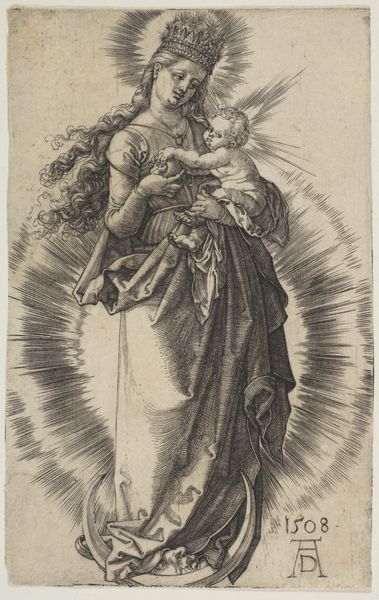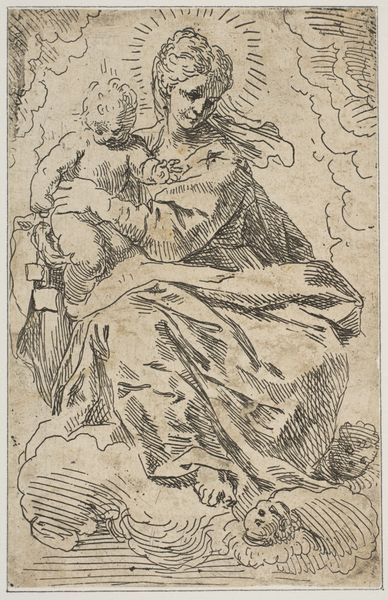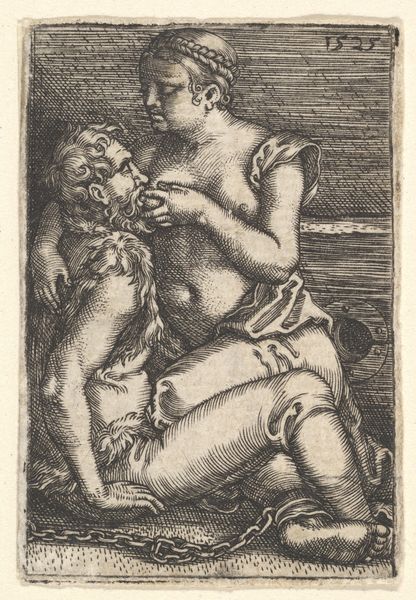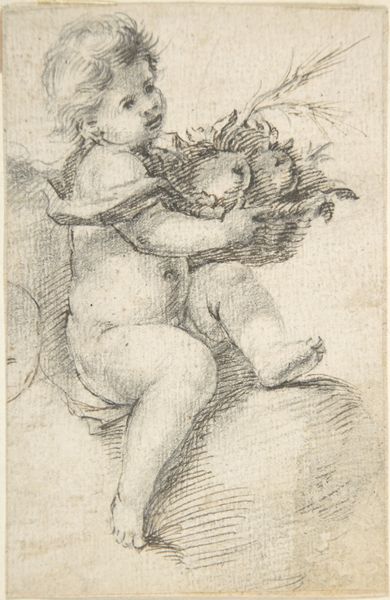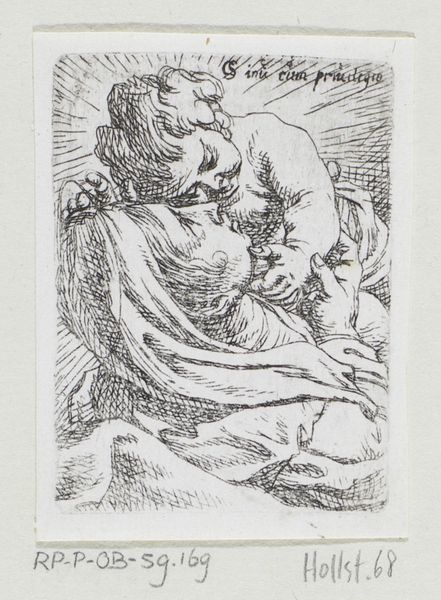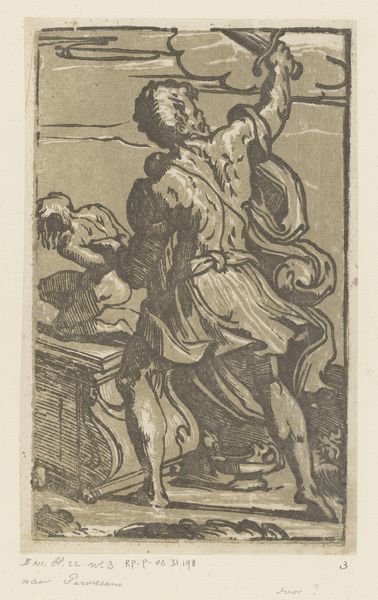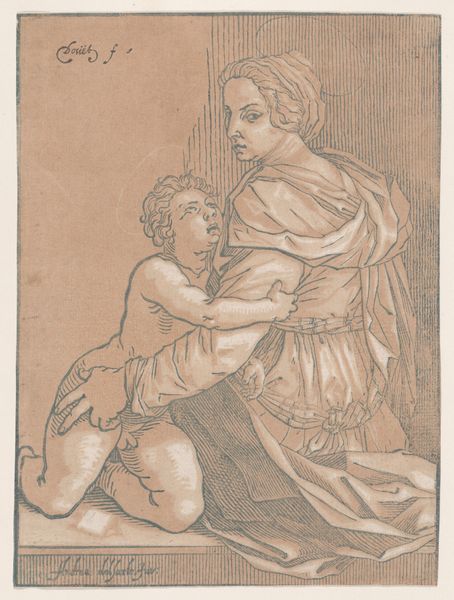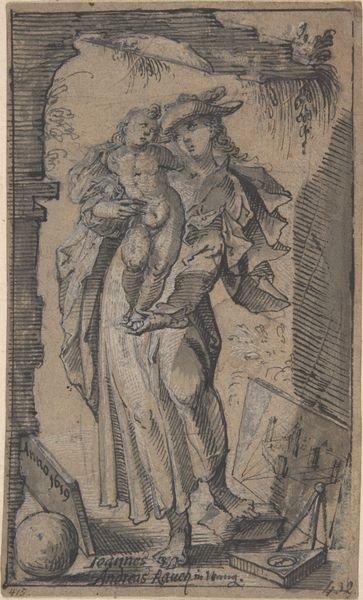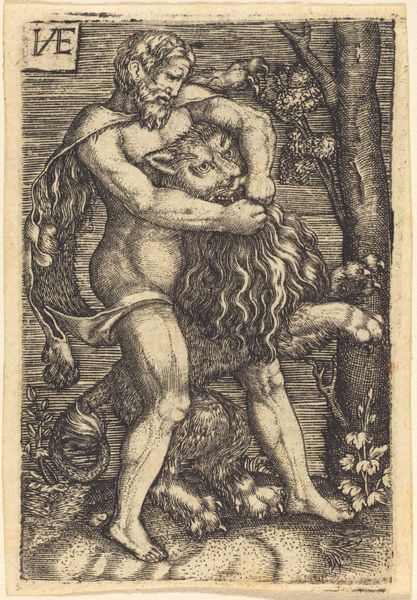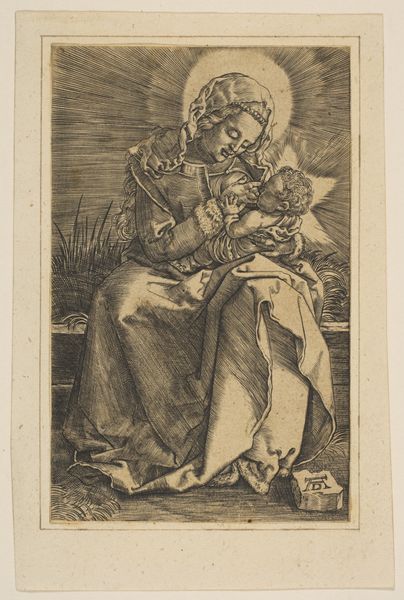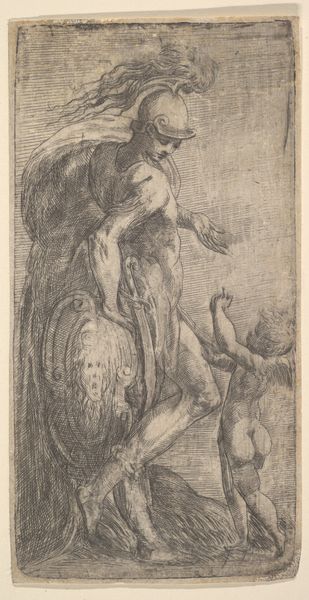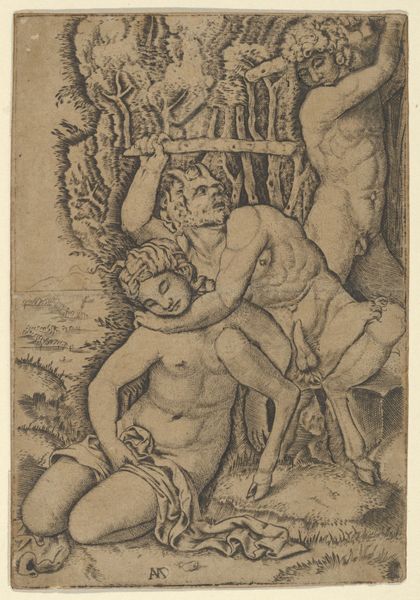
drawing, print, ink
#
portrait
#
drawing
#
baroque
# print
#
figuration
#
ink
#
christ
Dimensions: Sheet: 5 3/16 × 3 1/4 in. (13.2 × 8.2 cm)
Copyright: Public Domain
Curator: Look at this little jewel. It’s a print, made with ink, dating back to 1641. It represents St. Antony of Padua embracing the Christ Child. Editor: Immediately I get a sense of tenderness but also fragility. It's rendered in a way that feels very intimate, like catching a private moment. The monochrome palette contributes to the quiet intensity. Curator: There’s a real drama in simplicity here. Note how the lines, etched with such delicate precision, manage to evoke this powerful vision. St. Antony, one of the Catholic Church's most beloved saints, holds baby Jesus. Tradition says that Antony, when deeply in prayer, was graced with the vision of the Christ Child. Isn't that beautiful? Editor: Yes, "beautiful" is interesting here. The image promotes specific politics of religious representation in a post-reformation context where the Catholic church mobilized such art for didactic purposes to affirm their beliefs. What's striking to me, even if the political intention is somewhat predictable, is the tenderness depicted. It offers us an iconography of radical empathy. The bodies intertwined speak volumes. It almost reads as an erotic image—except it isn't meant to be read this way, which then poses critical questions on art, visuality, desire, and piety. Curator: It’s definitely intended to be devout, inspiring perhaps awe in the divine encounter but what moves me particularly are the almost human contours. The artist beautifully depicts the human quality of spiritual awakening. Also, this little flower adds another level of subtle visual and metaphorical information: the lily is one of the attributes of St. Anthony! It symbolizes purity and innocence. Editor: Symbolism always functions to solidify hierarchies, it's never simply "there". Consider the viewer of this print and what identities would be constructed through gazing. How would the very touch we see inform religious and secular conceptions of charity and selflessness, and maybe more nefariously, acceptance of oppression and exploitation in service to God? I agree with the tenderness but not the inherent innocuousness you ascribe to the print! Curator: Well, even if we can disagree on intent, this piece opens interesting portals into religious history and spiritual interpretations of intimacy and faith! Editor: Precisely. Art should always spark dialogue; and I can keep talking about this one!
Comments
No comments
Be the first to comment and join the conversation on the ultimate creative platform.
